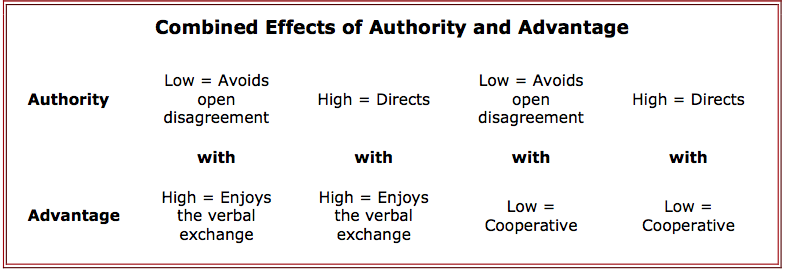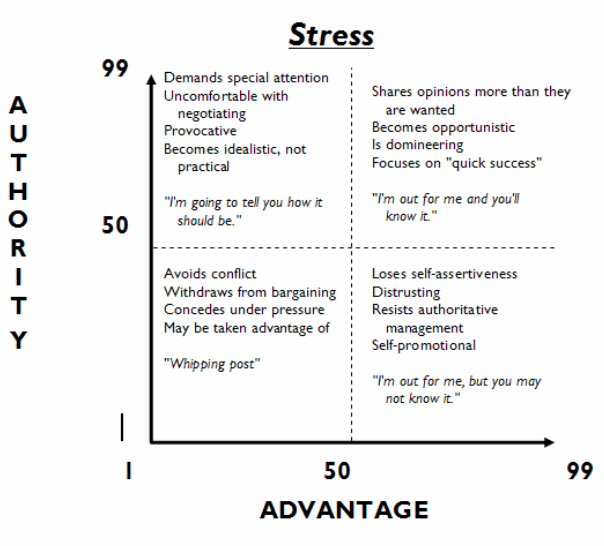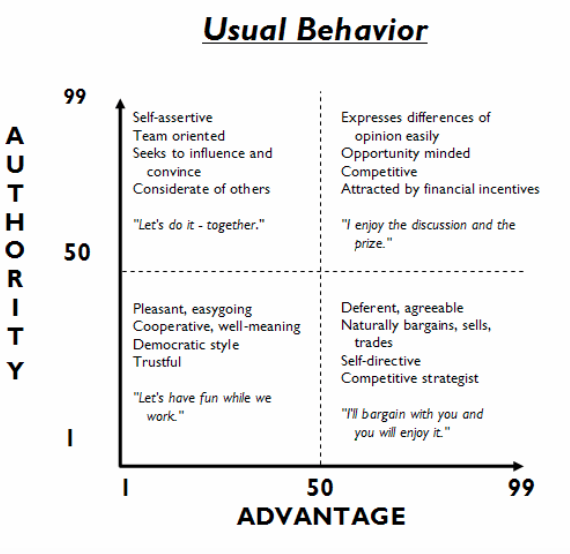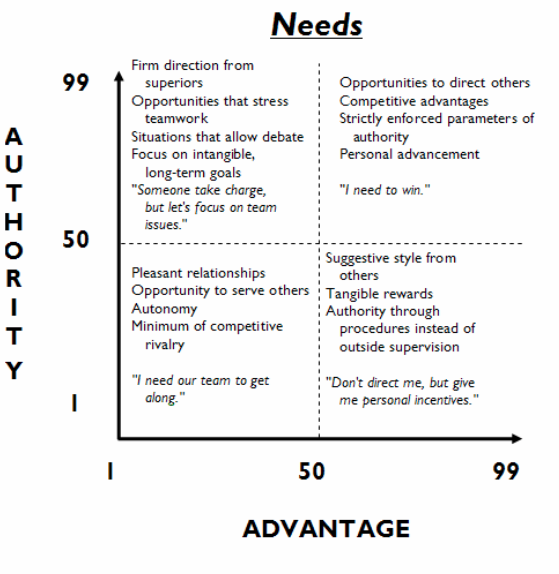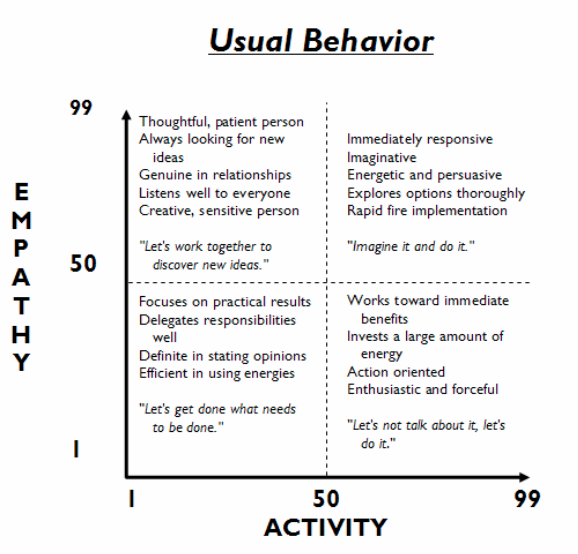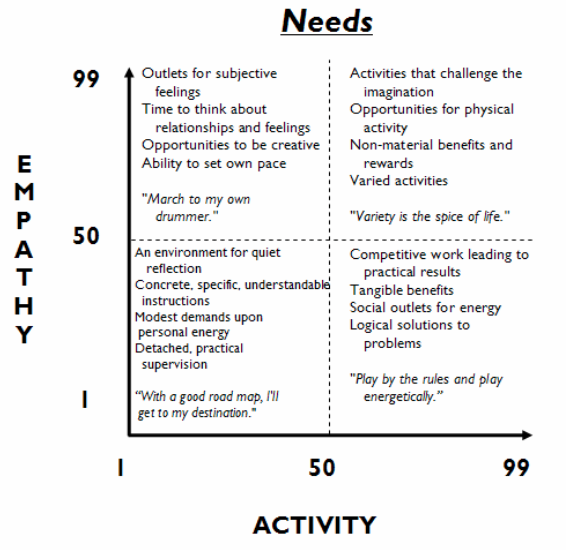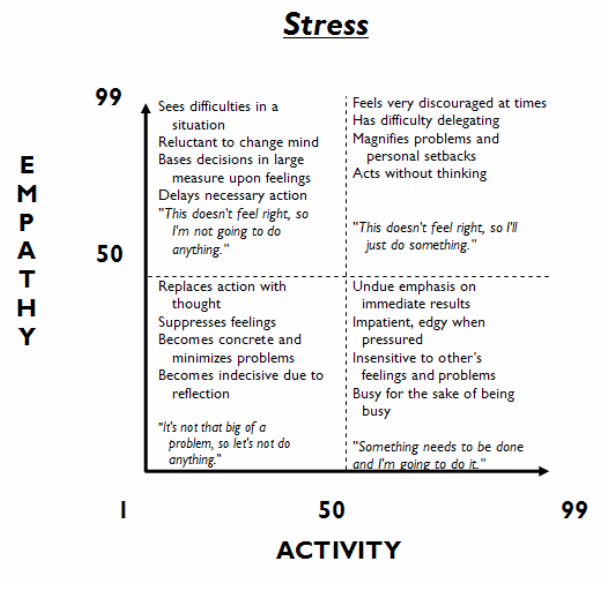Components ChartThe Birkman Components offer insight into a person’s behavior and motivations. Individually, the Components are very descriptive of individual’s Usual and Stress behavior, as well as their Needs. However, people do not exhibit just one behavior at a time. The eleven Components combined make up the total person. Therefore, when learning about an individual, it is important to look at Component combinations, not just isolated Components. Birkman has created a group format called the Components Chart. This format allows you to plot a group/team on various Component Combinations. In addition to being able to see where the individuals in a group are plotted, there are also descriptors for each quadrant (i.e. High/High, Low/High, High/Low, and Low/Low). You can access this format by going to the Group or Single Format section of BirkmanDirect®. This format features six critical Component Combinations: 1. Esteem & Acceptance– People Relations We have distinguished between two types of competition – competition in which winning is of the ultimate goal (the combination of Authority and Advantage) and competition in which the enjoyment of the competing itself is the most important aspect (the combination of Empathy and Activity). Although these two categories of people may seem similar at first glance further observance leads to the understanding that the two are very different – with different Needs and motivations. |
|
Issues Impacted by Authority (Verbal Dominance)
- Cooperation/Conflict management
- Use of authority
- Listening skills
- Openness to others’ ideas
- Emphasis of delegation
Issues Impacted by Advantage (Approach to Incentives)
- Risk-taking vs. security in the workplace
- Materialistic winning vs. intangible values
- Comfort with bargaining vs. negotiating
The behaviors exhibited by individuals with high Authority and high Advantage epitomize the competitive nature of people who want to win. Their high Authority Usual style allows them to be forceful, competitive and aggressive. Their high Advantage style allows them to be opportunity minded, resourceful and an eager debater. High Advantage people are very interested in the tangible demonstration of their successes – not for the reward itself, but for a concrete method of “keeping score”. Of course, the person with high Advantage/low Authority scores has certain aspects of the Need to Win component combination, but s/he may not come across quite as verbally forceful. The high Authority/low Advantage person will have the traits of forcefulness and aggressiveness, but s/he may not need the tangible rewards of the “win”.
Below is a graph showing the descriptors for the “Competition with the Need to Win” Component Combination. We have shown the Authority/Advantage Component Combinations for Usual, Need and Stress.
Let’s look at the Component Combination of Empathy and Activity. These two Components give us insight into characteristics of competition, but they are characteristics that are different from the ones highlighted by Authority and Advantage. When considering the effects of competition on individuals it will be important to look at all four of these Components to get a clear picture. In addition, it is critical to look at the Needs of the individual as well as the Usual behaviors – what motivates a person to behave in his Usual productive behavior (competitive or non-competitive, needing to win or not needing to win) may be very different from what one would expect by observing his behaviors.
Issues Impacted by Empathy (Emotional Expressiveness)
- Competitiveness vs. non-material benefits
- Practicality of ideas vs. thought and creative ideas
- Control vs. expressions of enthusiasm
Issues Impacted by Activity (Preferred Pace of Action)
- Urgency in decision making
- Balance between thought and action
- Quick wins vs. long range results
- Patience with planning and pacing
The combined effects of the Empathy and Activity lead to a different kind of competition. The high Activity/low Empathy person is someone who will energetically participate in competitive activities and will remain practical and focused on the task – leading to an enjoyment of the activity without having to “win”. Of course, you still need to look at the other Competition Combination because if a person has the high Authority/high Advantage (needing to win) combination and the high Activity/low Empathy combination you will see a person that does need to win and also is energetic and task oriented about addressing the activity.
As you may be beginning to understand, the various combinations of all the Components will have an effect on a person’s observable behavior. Some scores may mitigate the effects of another score and others may exacerbate the effects. The Component Combinations are just the beginning of putting the Components together to describe the complexity of a person.
Below is a graph showing the descriptors for the “Competition without the Need to Win” Component Combination. We have shown the Empathy/Activity Component Combinations for Usual, Need and Stress.


